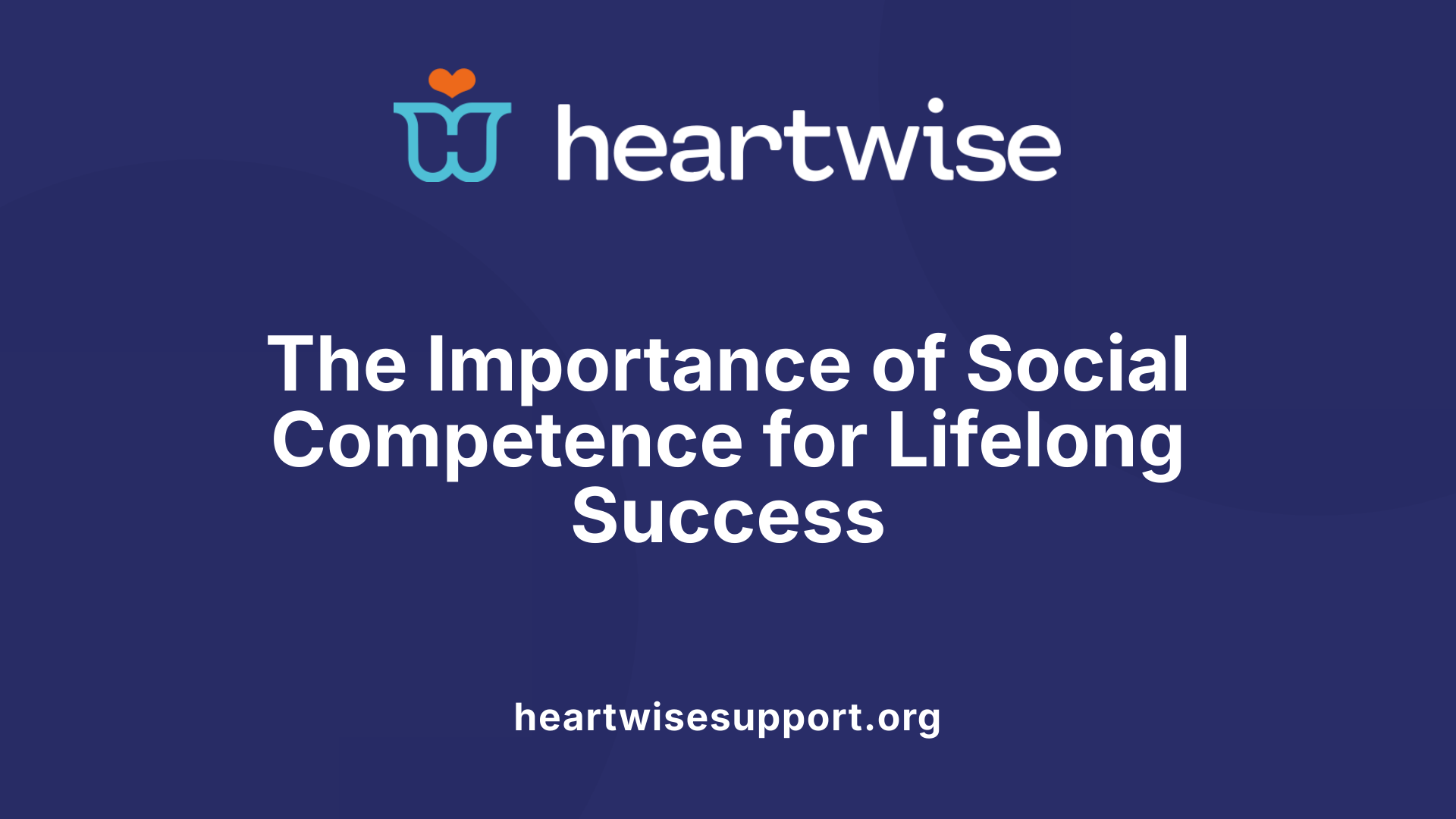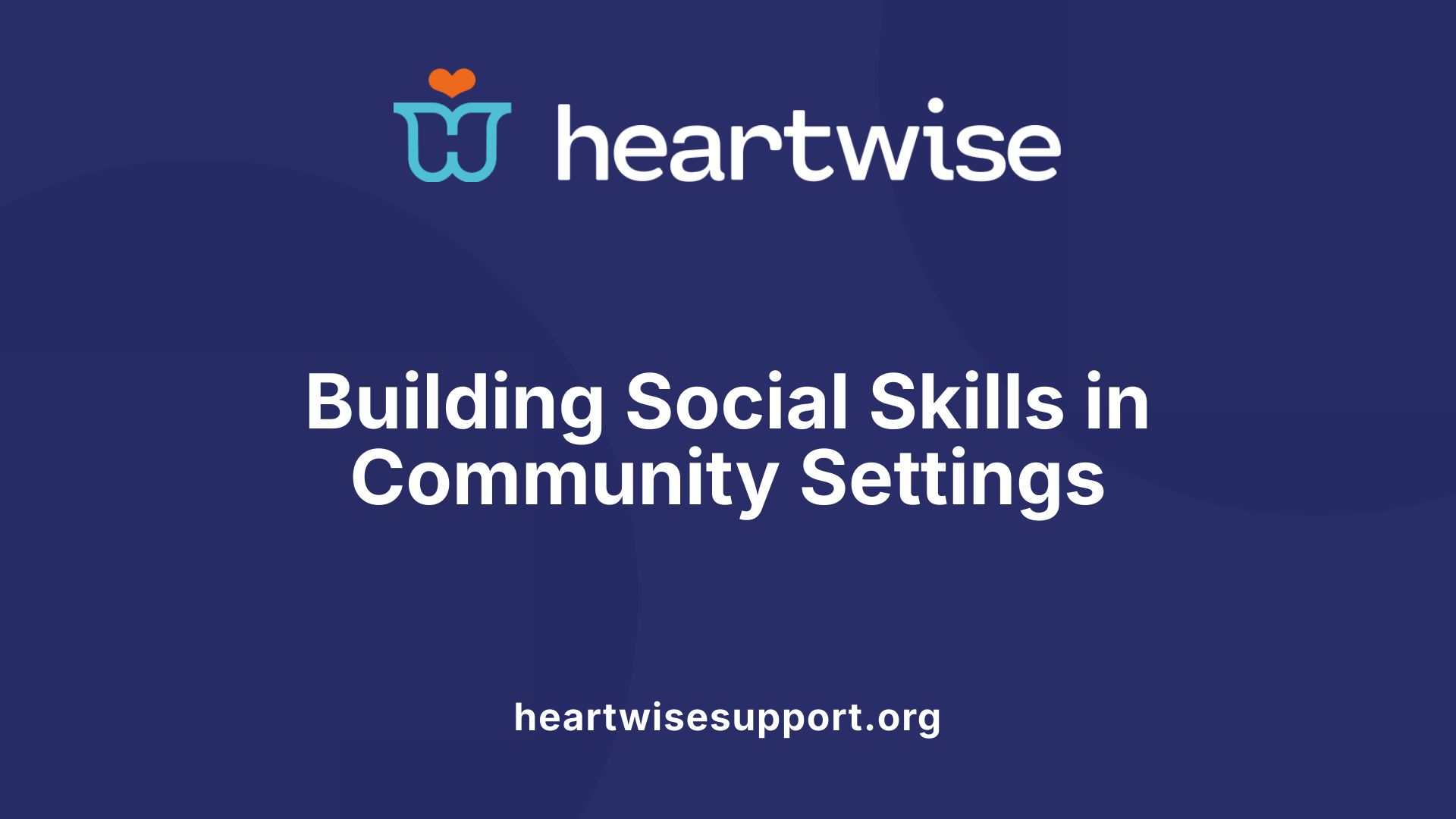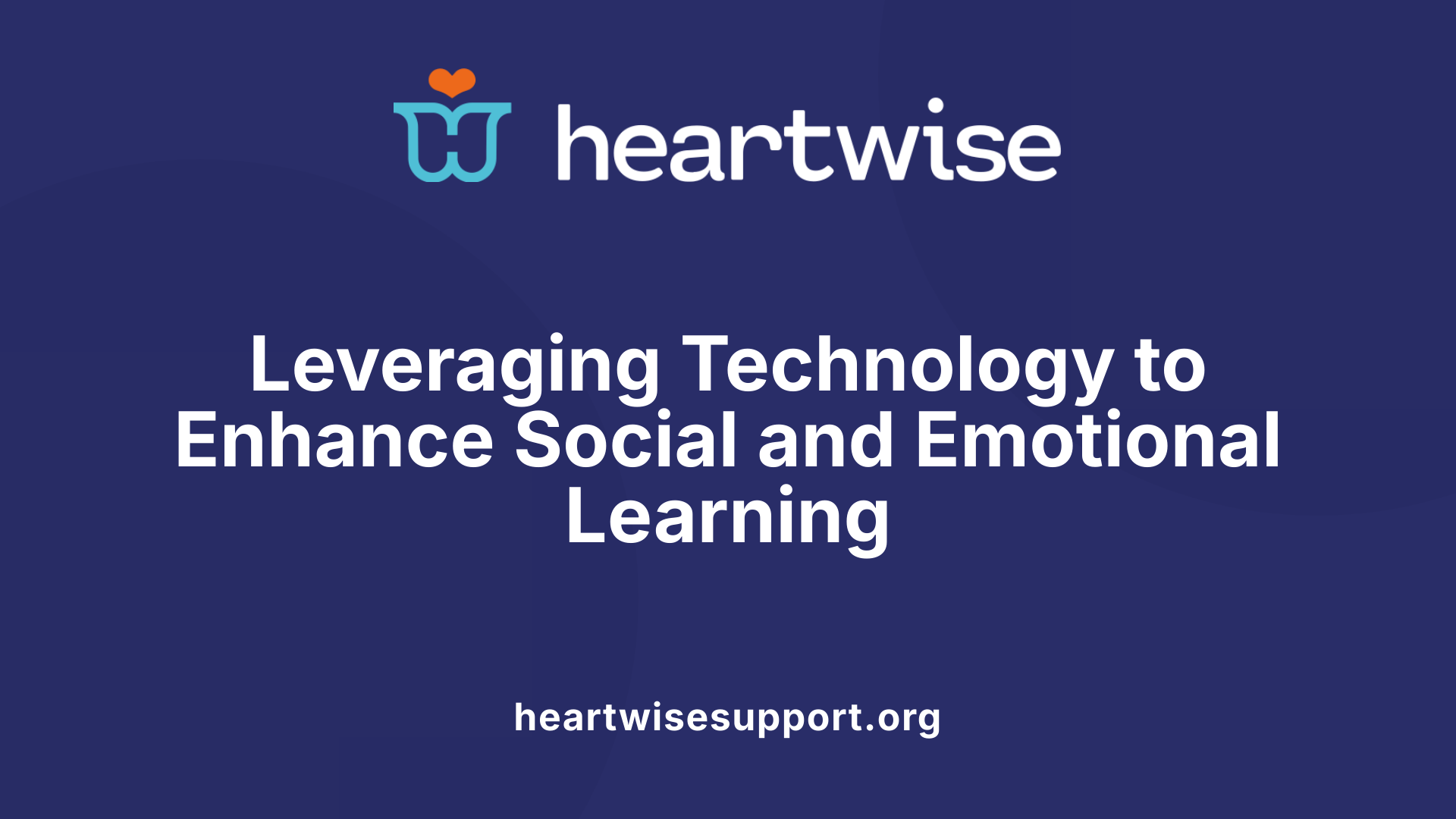Connecting Communities and Schools to Foster Social Competence
Community programs serve as vital platforms for nurturing social competence among children and youth. By providing safe, engaging, and developmentally appropriate environments, these initiatives help young individuals develop essential social-emotional skills that underpin positive relationships, academic success, and lifelong well-being. This article explores how community-based strategies, partnerships, and evidence-based practices empower young people to navigate complex social landscapes effectively.
Understanding Social Competence and Its Significance

What is social competence, and why is it important?
Social competence refers to the ability to effectively navigate social interactions and maintain healthy relationships. It involves understanding the social environment, recognizing others’ feelings and intentions, and choosing appropriate behaviors in various contexts.
Developing strong social skills helps individuals communicate effectively, manage conflicts, and build trust with others. These skills are vital not only for personal well-being but also for success in academic and professional settings.
Interventions designed to enhance social competence often include activities such as video sequences, role-play exercises, and self-assessment tools. These are especially used in early childhood education to build foundational social and emotional skills.
By fostering social competence, programs aim to prepare children for positive social engagement, emotional regulation, and resilience—building blocks for lifelong well-being.
How does social competence impact other areas of development?
The influence of social competence extends across multiple aspects of a child's growth. When children develop strong social and emotional skills, they are better equipped to establish healthy peer relationships, communicate effectively, and solve problems collaboratively.
This ability to connect socially fosters positive behaviors such as sharing, cooperating, and helping others, which enhances social integration and reduces behavioral problems.
Moreover, social competence positively impacts academic performance. Children who can self-regulate, stay focused, and effectively engage with teachers and peers tend to perform better academically.
Conversely, lacking social skills can lead to social withdrawal, low self-esteem, and difficulties in peer interactions, which may hinder overall development.
Early nurturing of these skills through supportive environments, school-based programs, and community initiatives can promote healthier emotional well-being and support holistic growth.
| Aspect of Development | Impact of Social Competence | Supporting Activities |
|---|---|---|
| Emotional well-being | Better emotional regulation and resilience | Role-playing, emotional literacy activities |
| Peer relationships | Stronger friendship skills, reduced conflict | Cooperative games, sharing activities |
| Academic success | Improved attention, engagement, and self-regulation | Classroom routines, goal setting |
| Behavioral health | Reduced problem behaviors and social withdrawal | Social skills training, positive reinforcement |
| Long-term life skills | Leadership, empathy, and responsible decision-making | Community service projects, group discussions |
Building social competence is a fundamental component of children’s overall development. Schools, families, and community programs all play vital roles in fostering these abilities from early childhood onward.
Research consistently supports that effective social emotional learning (SEL) programs improve not only social skills but also emotional health, academic outcomes, and behavioral adjustment.
The integration of SEL into daily routines, curricula, and extracurricular activities ensures that children gain the necessary skills to succeed socially and emotionally throughout their lives. As a result, fostering social competence is an investment in children’s future success and well-being, shaping healthier communities and more empathetic citizens.
Community Programs: Foundations for Social Skill Development

How do community programs support the development of social competence in children and youth?
Community programs play a vital role in nurturing social skills among children and young people by providing safe, engaging, and developmentally appropriate settings for learning. These programs, such as afterschool initiatives, youth clubs, and summer camps, create opportunities for kids to practice communication, cooperation, and conflict resolution in real-world contexts.
Aligning with frameworks like CASEL’s social and emotional learning (SEL) model, they focus on core aspects such as self-awareness, relationship skills, and responsible decision-making. Activities like community service projects, peer mentoring, and group outings help children build trust, empathy, and cultural understanding.
Family involvement is also a cornerstone, with caregivers actively supporting and reinforcing social-emotional skills learned in community settings. This consistent engagement encourages children to transfer skills from the program to everyday life, fostering lasting social competence.
By offering inclusive opportunities that celebrate diversity, community programs ensure that all youth, regardless of background, can develop positive social relationships, emotional resilience, and a greater sense of community belonging. These environments help youth navigate social challenges effectively, contributing to their overall personal growth and societal integration.
What principles guide community programs in promoting social and emotional development?
Community programs are driven by foundational principles aimed at creating equitable and impactful environments for social and emotional development. First, they prioritize evidence-based SEL strategies that are adapted to the cultural and local context. This means incorporating practices that resonate with community values, beliefs, and traditions to maximize relevance and engagement.
Creating safe and inclusive spaces is essential. These programs foster trust and positive relationships by emphasizing respect, fairness, and emotional support. Diversity and equity are central, ensuring that all participants feel valued and connected, regardless of their backgrounds.
Partnerships are fundamental, linking schools, families, community organizations, and local leaders. Such collaborations enable a comprehensive approach, leveraging diverse perspectives for a more profound understanding of community needs.
Integrating SEL into daily activities, curricula, and the broader school climate encourages consistent reinforcement of social-emotional skills. This systemic approach, coupled with ongoing assessment and data collection, helps tailor programs to address emerging needs and measure progress.
Ultimately, these principles aim to cultivate environments where children and youth develop self-awareness, empathy, responsible decision-making, and healthy relationships, leading to improved well-being and contribution to society.
More information about how community programs foster social competence
Community programs are instrumental in developing social competence by providing real-life contexts in which children can apply and strengthen their social skills. They emphasize inclusive participation, cultural responsiveness, and a focus on building trust and mutual respect among all involved.
These programs promote social-emotional learning through experiential activities that develop resilience, empathy, and cooperation, which are crucial for successful peer interactions and community integration.
The emphasis on relationship-building, combined with structured instruction and spontaneous social interactions, helps children learn to navigate social complexities and develop emotional regulation skills. Furthermore, by engaging families and local leaders, community initiatives create a cohesive support network.
There is evidence that participation in diverse community activities correlates with improved social competence, especially among marginalized groups. These programs are also effective in teaching conflict resolution, communication skills, and fostering cultural awareness, all of which are vital for thriving in diverse settings.
In essence, community-based programs complement formal education by reinforcing social and emotional skills through meaningful, culturally relevant, and sustained engagement, preparing youth to succeed both inside and outside of school.
| Aspect | Description | Example Practice |
|---|---|---|
| Environment | Safe, inclusive, equitable spaces | Restorative circles, anti-bias training |
| Principles | Evidence-based, culturally responsive | Adapted SEL curricula, community input |
| Engagement | Family and community partnership | Parent workshops, community events |
| Approach | Systematic, continuous improvement | Data-driven program evaluation |
| Focus | Promote core SEL competencies | Peer mentoring, service learning |
This table summarizes the pillars of effective community programs supporting social-emotional development and how they translate into practice.
Evidence-Based Frameworks for Developing Social Skills

What evidence-based frameworks and approaches are used in community programs to develop social competence?
Community programs rely on proven frameworks to foster social-emotional skills among children and youth. One prominent model is the CASEL (Collaborative for Academic, Social, and Emotional Learning) framework, which identifies five essential competencies: self-awareness, self-management, social awareness, relationship skills, and responsible decision-making. These core areas serve as the foundation for designing curricula and activities that promote social competence.
Programs such as Positive Action adapt curricula to emphasize personal well-being, responsible behavior, and social interaction, resulting in improved student relationships and classroom behavior. Similarly, the Social Thinking Methodology, developed by Michelle Garcia Winner, focuses on enhancing social cognition — helping individuals understand others’ perspectives through strategies like story-based learning, role-playing, and cognitive-behavioral techniques.
Effective approaches within these frameworks often include video modeling, structured social scenarios, and role-play exercises. These methods are backed by research as evidence-based practices that facilitate meaningful learning and behavior change. Emphasizing cultural relevance and developmental appropriateness, community programs integrate systemic strategies that adapt to specific community needs, promoting long-term social-emotional growth.
By embedding these scientific approaches into their activities, community programs effectively nurture social skills across diverse populations, creating supportive environments that reinforce learning both within and outside school settings.
What role do afterschool and extracurricular programs play in social skills development?
Afterschool and extracurricular activities are crucial for cultivating social-emotional competencies. These programs extend learning beyond classroom boundaries, offering real-world contexts where children can practice communication, collaboration, empathy, and self-regulation.
Activities such as sports, arts, leadership clubs, and community service projects foster teamwork, dispute resolution, and resilience. Supportive adult mentors and coaches serve as role models, demonstrating positive social behaviors and providing guidance during emotional or social challenges.
Many of these programs adopt evidence-based curricula like Second Step, which emphasizes kindness, respect, and a growth mindset. These curricula promote understanding of emotions, conflict management, and social problem-solving.
Research underscores that participation in well-structured afterschool programs enhances not only social skills but also self-confidence and school engagement. These settings create safe, inclusive spaces where students can develop healthy relationships, practice empathy, and learn crucial skills needed for success in broader social contexts. Overall, extracurricular programs are vital complements to school-based SEL efforts, supporting holistic social-emotional development.
Strategies and Methods to Foster Social and Emotional Skills
What strategies do community programs use to foster social skills?
Community programs employ a diverse set of strategies aimed at nurturing social skills among children and youth. Central to their approach are peer mentorship, structured activities like role-plays, cooperative group tasks, and interactive simulations that mimic real-life social situations.
Many programs incorporate research-based curricula such as the Collaborative for Academic, Social, and Emotional Learning (CASEL) framework and proven initiatives like Positive Action. These curricula focus on promoting responsible decision-making, self-awareness, self-management, and social awareness.
Visual and digital tools are also widely used to enhance engagement. For example, video modeling allows children to observe desired social behaviors, while student-created videos serve as a reflective and reinforcing activity.
Creating inclusive, safe environments is vital; thus, community programs often integrate social narratives, group-based activities, and scenario-based discussions to build empathy and understanding across diverse populations.
Overall, these programs blend explicit instruction, practical practice, and meaningful social interactions to systematically develop essential social skills. The combination of direct teaching and real-world application helps children translate learned skills into everyday interactions.
How do community programs implement social-emotional learning principles practically?
Practical implementation of SEL principles in community settings involves a variety of methods designed to actively teach and reinforce social-emotional competencies. Explicit teaching remains at the core, with facilitators guiding children through targeted lessons on recognizing emotions, managing impulses, and establishing positive relationships.
Role-playing, storytelling, and visual cues serve as powerful techniques, allowing children to practice social scenarios in a controlled, supportive environment. These methods help children internalize appropriate responses and behaviors.
Mentors and facilitators modeling respectful, empathetic behaviors provide live demonstrations, making abstract concepts tangible and understandable. Immediate, specific positive feedback during activities boosts children's confidence and consolidates learning.
Implementing routines and rituals, such as start-of-day greetings or collaborative problem-solving sessions, promotes consistency and predictability. These routines create a safe space conducive to emotional learning.
Digital tools and interactive activities, including educational videos, gamified apps, and virtual simulations, offer personalized learning opportunities. These technologies make SEL practice engaging, relevant, and adaptable to individual needs.
By integrating these techniques into daily routines and activities, community programs ensure that social-emotional skills are not only learned but also applied across various real-world contexts, fostering lasting development.
Best Practices and Principles Guiding Community Efforts
What principles guide community programs in promoting social and emotional development?
Community programs designed to foster social and emotional development are grounded in several core principles. They primarily focus on implementing evidence-based SEL strategies that are meaningful and culturally responsive, ensuring that the approaches resonate with the specific community context. Creating safe, inclusive, and equitable environments is essential, as these spaces promote trust, positive relationships, and a sense of belonging among students, families, and community members.
Partnerships are vital; effective programs leverage collaboration among schools, families, and community organizations. These partnerships bring diverse perspectives and utilize a comprehensive understanding of local needs, which enhances the relevance and impact of social-emotional initiatives.
Integrating SEL into everyday practices, curricula, and school climate policies helps develop vital social-emotional skills such as self-awareness, empathy, and responsible decision-making. Continuous evaluation and data-driven improvements facilitate the refinement of programs to better serve community needs.
Finally, employing a system-wide approach that includes ongoing training, oversight, and stakeholder involvement fosters sustainable success. This cohesive strategy ensures that community efforts contribute meaningfully to social-emotional competence, equity, and overall well-being.
How can community involvement promote social and emotional development in children and youth?
Community involvement significantly boosts social and emotional development among children and youth by establishing supportive, trusting relationships through collaborative partnerships between schools, families, and local organizations.
These collaborations open up opportunities for enriching out-of-school experiences such as leadership programs, arts, sports, and service projects. Such activities naturally foster social-emotional skills—like self-awareness, empathy, teamwork, and responsible decision-making—in real-world contexts.
Community programs often embed SEL principles into various activities within safe and inclusive spaces. This consistent reinforcement across settings helps children internalize and practice critical skills effectively.
Engagement in service-learning projects further enhances this development by encouraging students to connect with their communities, reflect on their roles, and foster empathy. These experiences nurture key competencies and promote a sense of belonging.
Overall, involving community members and resources creates a systemic framework that supports holistic growth, bridges educational gaps, and promotes social equity. Strengthening these partnerships leads to resilient communities where children can thrive academically, socially, and emotionally.
| Principle or Strategy | Description | Additional Notes |
|---|---|---|
| Evidence-based approaches | Using proven SEL strategies aligned with community culture | Personalization to local needs |
| Safe and inclusive environments | Ensuring environments promote trust and belonging | Critical for effective engagement |
| Partnership development | Building collaborations among schools, families, and organizations | Inclusion of diverse voices |
| Integration into daily practices | Embedding SEL in curricula, routines, and policies | Reinforces learning and behaviors |
| Data-driven improvement | Using feedback and assessment for ongoing refinement | Ensures relevance and effectiveness |
| System-wide support | Infrastructure, training, and sustainability measures | Long-term impact |
This shared commitment to principles ensures that community programs effectively nurture social and emotional skills, fostering healthier, more connected communities and better prepared youth.
Impact of SEL on Student Outcomes and Well-Being
What research findings and principles guide community programs aimed at developing social competence?
Research underscores that social-emotional learning (SEL) programs are a cost-effective way to positively influence students and school environments. Meta-analyses reveal that universal SEL interventions significantly enhance social skills, attitudes, behaviors, and academic results among students.
A core element for effective programs is the identification of essential components. Evidence-based elementary school SEL curricula frequently focus on practices such as teaching social skills, recognizing feelings—both one’s own and others’—and fostering relationship-building activities.
The framework established by the Collaborative for Academic, Social, and Emotional Learning (CASEL) structures these competencies into five principal areas: self-awareness, self-management, social awareness, relationship skills, and responsible decision-making.
Implementing trauma-informed and resilience-focused approaches has become common, especially in community programs like WINGS for Kids and Boys & Girls Clubs. These strategies address emotional distress and behavioral challenges, creating supportive environments where children can thrive.
Community programs are designed to be adaptable, scalable, and culturally sensitive, directly guiding the development of interventions that promote not just social competence but also academic success.
How does early childhood SEL influence later success?
Early childhood is a critical period for the development of social and emotional skills. Interventions like Japan’s Fun FRIENDS program demonstrate how early programs can lead to meaningful improvements in children’s behavior, emotional well-being, and social skills.
Research shows that fostering skills such as emotional regulation, empathy, and social cognition in young children has long-lasting impacts. Children who develop these core competencies early are better equipped to navigate social interactions, adapt to school settings, and cope with challenges.
Creating nurturing, secure environments through supportive relationships with caregivers and teachers helps establish a strong foundation for future success. Techniques like practicing social skills, encouraging prosocial behaviors, and addressing emotional needs contribute to improved mental health, academic achievement, and social integration during later childhood and adolescence.
By emphasizing the importance of early intervention, educators and community organizations can ensure children build resilient and adaptable social-emotional capabilities that support lifelong development.
Role of Families, Teachers, and Mentors in Developing Social Competence
Supporting social-emotional learning at home and school
Children’s social and emotional development is nurtured through consistent support both at home and in educational settings. Caregivers—such as parents and family members—play a crucial role by fostering nurturing, responsive relationships. They validate children's feelings, creating a supportive environment where children feel safe to express emotions and explore social interactions.
In schools, teachers contribute by establishing a classroom climate characterized by warmth, respect, and active listening. They model appropriate behaviors, demonstrate empathy, and incorporate social-emotional learning (SEL) themes into curricula through read-aloud stories, classroom activities, and discussions about feelings and relationships.
Both home and school settings benefit from intentional practices such as coaching children during social interactions, providing immediate positive reinforcement, and using visual and verbal cues to guide behavior. Spending quality, private time with children—through storytelling, play, or one-on-one conversations—helps strengthen bonds and demonstrates trustworthiness. Engaging families through ongoing communication and joint activities ensures that social-emotional development is reinforced consistently across environments, fostering resilience and social competence.
Modeling and reinforcement techniques
Adults support social-emotional growth effectively when they serve as positive role models. Demonstrating respectful communication, expressing emotions appropriately, and problem-solving in real-time offer children clear examples to emulate. Reinforcement strategies, such as specific praise and immediate feedback, reinforce desired behaviors and emotional responses.
Using books that address feelings and social challenges can be powerful teaching tools. After reading, adults can facilitate discussions that help children identify emotions and relate them to their own experiences. Role-playing and storytelling activities further bolster social understanding by allowing children to practice skills in a safe setting.
Tie-in routines, such as morning check-ins or emotion checklists, also create predictable opportunities for children to reflect on their feelings and social behaviors. These practices, coupled with consistent adult guidance, cultivate an environment where children learn to manage emotions, communicate effectively, and develop empathy—foundational skills for lifelong social competence.
The influence of role models and mentors
Support from trusted adults—whether teachers, mentors, or community leaders—has a profound impact on social skills development. Role models exemplify positive social behaviors, empathy, cooperation, and responsible decision-making, providing children with concrete examples of how to navigate social situations.
Mentors, especially in programs like Boys & Girls Clubs, serve as trusted guides who help children develop resilience and emotional intelligence. They offer stability, support, and understanding, particularly for youth facing traumatic experiences. Trauma-informed approaches within mentoring relationships foster trust and create safe spaces where children feel valued and understood.
Mentors contribute by actively teaching children how to resolve conflicts, express feelings constructively, and demonstrate empathy. These relationships promote self-confidence and motivate children to build healthy, respectful relationships with their peers.
Overall, role models and mentors serve as catalysts for social-emotional growth by creating environments of safety, understanding, and encouragement. Their influence helps children develop essential social competencies, setting a foundation for positive interactions throughout life.
| Role of Support Systems | Impact | Strategies | Examples |
|---|---|---|---|
| Caregivers at Home | Validate emotions, create safe space | Responsive relationships, active listening | Daily check-ins, emotion labeling |
| Teachers in School | Model behaviors, reinforce skills | Respectful communication, curriculum integration | Classroom discussions, social stories |
| Mentors & Role Models | Demonstrate social skills, build resilience | Trust-building, experiential learning | Community programs, one-on-one mentorship |
| Overall Community | Foster social inclusion, empathy | Safe environments, collaborative activities | After-school programs, social clubs |
Building strong support systems in families, schools, and communities creates a comprehensive approach to nurturing social competence. When these spheres work collaboratively, children are better equipped to develop empathy, resilience, and responsible social behaviors essential for their overall well-being and success.
Distance Learning and Technology Support for Social-Emotional Skills

How do technology tools support SEL development in community programs?
Technology tools have become vital in enhancing social-emotional learning (SEL), especially in community programs adapting to new delivery methods. Digital platforms offer engaging, personalized experiences that are accessible to children across various settings. For example, AI robot toys like Miko serve as interactive role models, prompting children to recognize emotions, practice communication, and develop empathy through playful interactions.
Educational games such as Zoo U simulate social scenarios, allowing children to make decisions, collaborate with peers, and reflect on their behaviors in a safe virtual environment. Comprehensive digital programs like Ripple Effects combine behavioral tracking, social stories, and skill-building activities to tailor learning experiences to individual needs.
These tools help bridge gaps caused by limited in-person contact by maintaining social connections and promoting emotional recognition. They support responsible decision-making even during remote learning periods by encouraging children to apply their SEL skills online. Interactive features such as storytelling, role-playing exercises, and peer interaction functionalities make SEL accessible and engaging. Overall, technology-driven approaches extend social competence development beyond traditional settings, ensuring children continue to grow socially and emotionally regardless of physical distance.
Transforming Communities Through Social-Emotional Learning
Community programs play a pivotal role in developing social competence by creating inclusive, supportive environments that promote social-emotional skills across diverse populations. Through collaborative partnerships, evidence-based frameworks, and innovative strategies—including technology integration—they equip children and youth with the competencies necessary for meaningful relationships and lifelong success. Investing in these initiatives fosters resilient, empathetic, and socially responsible individuals who can contribute positively to their communities and beyond. As research continues to affirm the benefits of community-based SEL, expanding access and tailoring approaches to local needs will be crucial in cultivating a future generation capable of navigating the complexities of social life with confidence and compassion.
References
- SEL in Communities - CASEL
- [PDF] Improving Social Competence Programs for Children and Youth
- A global community-based approach to supporting social and ...
- Promoting Children's Social Skills and Emotional Competence
- The Core Components of Evidence-Based Social Emotional ...
- What Is the CASEL Framework?
- Evidence for Social and Emotional Learning in Schools
- How Afterschool Programs Reinforce Social-Emotional Learning











